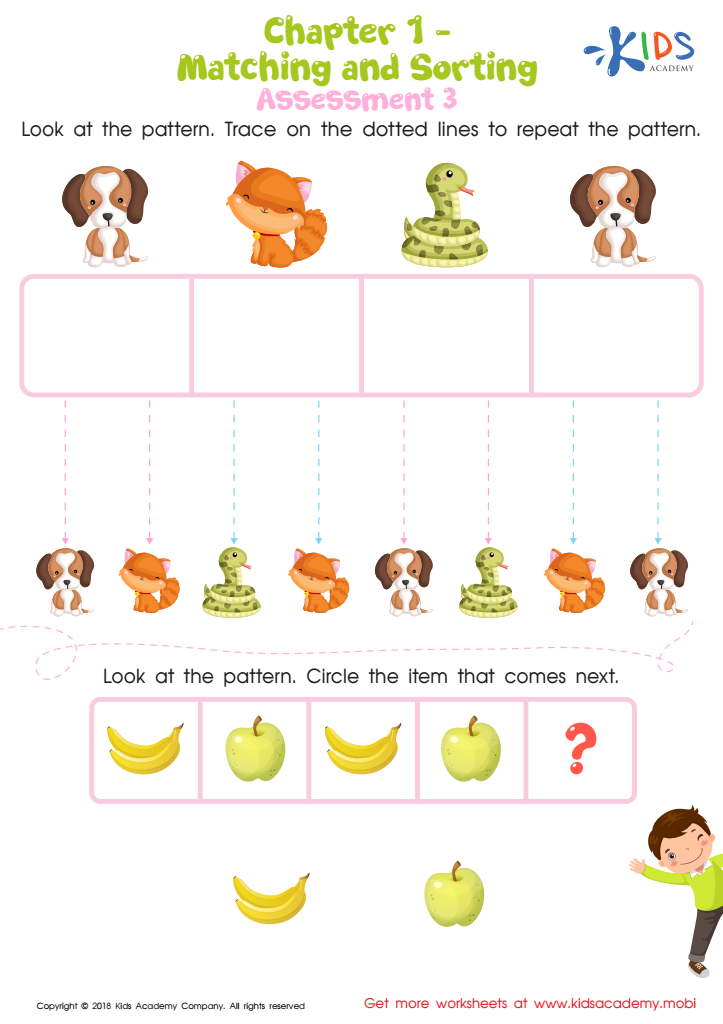Patterns Worksheets for Ages 3-4
6 filtered results
-
From - To
Introducing our engaging Patterns Worksheets, specially designed for Ages 3-4! This colorful collection of activities is perfect for toddlers embarking on their early learning journey. Through a series of carefully crafted exercises, your little one will explore the fascinating world of patterns, strengthening their observation and reasoning skills in a fun, interactive way. Whether it's identifying, completing, or creating patterns, these worksheets are tailored to spark curiosity and enhance cognitive development in young minds. Ideal for both classroom and at-home learning, our Patterns Worksheets for Ages 3-4 are your go-to resource for nurturing your child's foundational math skills while keeping them thoroughly entertained.


Matching and Sorting for Preschool: Assessment 3 Worksheet


Food Pattern Fun Worksheet


Shape Pattern Fun Worksheet


Make the Same Pattern Worksheet


Find the Pattern Worksheet
Worksheets on Patterns for Ages 3-4 are a crucial tool in the early development stages of children. Engaging young minds in the exploration of patterns not only captivates their interest but also lays the foundation for critical thinking and problem-solving skills. At this tender age, children are naturally curious and eager to explore their environment. By introducing them to pattern worksheets, we tap into their innate desire to recognize shapes, colors, and sequences, making learning both fun and educational.
Patterns for Ages 3-4 worksheets are specifically designed to cater to the developmental needs of preschoolers. Through these worksheets, children learn to identify, create, and extend patterns, which are essential skills in early math education. This hands-on approach aids in the development of their fine motor skills as they draw, color, and match patterns. It also enhances their understanding of sequences and order, which are fundamental concepts in math and science.
Moreover, working with patterns encourages children to make predictions about what comes next, fostering their analytical skills. It promotes logical thinking and increases their attention to detail. These worksheets serve as a stepping stone for children to grasp more complex concepts as they grow, making them a vital component in early childhood education.
 Assign to My Students
Assign to My Students





















